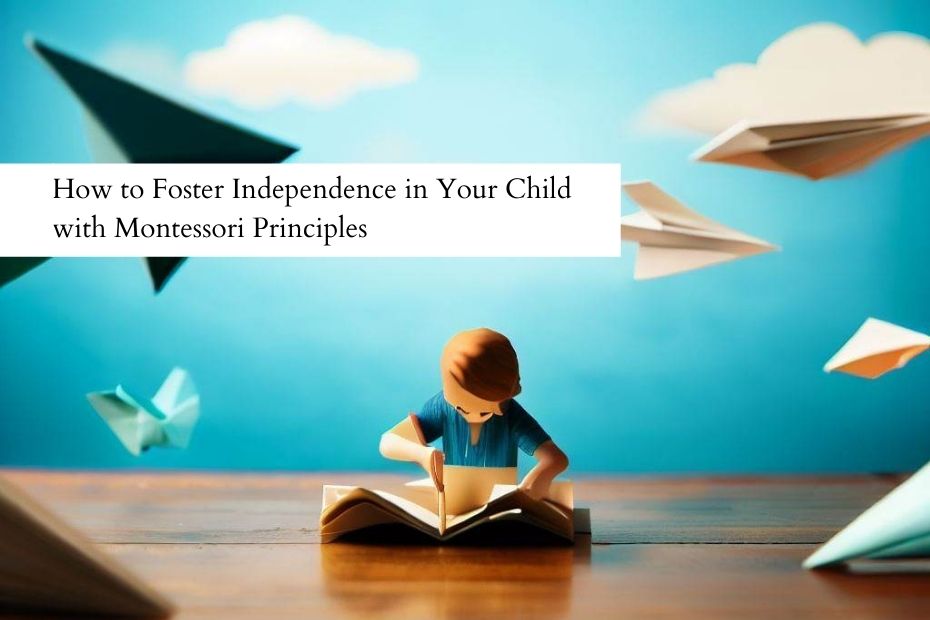Hey Montessori!
We’re thrilled to share with you today some insights on a topic that we are often asked about: fostering independence in children.
As parents, we all want our children to grow into self-reliant, confident individuals.
But how do we guide them towards this goal in a way that respects their individuality and pace?
The Montessori philosophy offers some beautiful and practical answers.
Understanding Independence in a Montessori Context
In the Montessori philosophy, independence doesn’t mean pushing the child to do everything on their own or grow up too quickly.
Instead, it’s about nurturing the child’s natural drive to do things for themselves, in a way that’s appropriate for their age and development.
It’s about creating an environment where children feel safe to explore, make mistakes, and learn from them.
Montessori Principles that Foster Independence
Several key Montessori principles guide us in fostering independence:
Respect for the Child: This is the cornerstone of Montessori. We respect the child as a unique individual, with their own interests, pace, and way of learning. This respect is the foundation for fostering independence.
Prepared Environment: We create an environment that meets the child’s needs and invites exploration. Everything is within the child’s reach and organized in a way that makes sense to them.
Freedom within Limits: Children are free to explore and choose their activities, within clear and consistent boundaries. This freedom gives them the space to learn and grow, while the limits provide a sense of security.
Self-Directed Learning: In Montessori, children are active participants in their learning. They choose their activities, work at their own pace, and learn from their own discoveries.
Practical Ways to Foster Independence at Home
So, how can we put these principles into practice at home? Here are some ideas:
Creating a Child-Friendly Environment: Make sure your home environment is safe and accessible for your child. Have furniture that’s the right size for them, and keep materials and toys on low shelves that they can reach.
Encouraging Self-Care and Practical Life Skills: Teach your child to do everyday tasks like dressing, washing hands, or setting the table. Start with simple tasks and gradually introduce more complex ones as they grow.
Allowing for Free Choice within Set Boundaries: Give your child the freedom to choose their activities, within the limits you set. For example, they can choose what to wear from a selection of clothes you provide.
Promoting Problem-Solving and Decision-Making Skills: Encourage your child to solve problems and make decisions on their own. Resist the urge to step in immediately when they encounter a challenge. Instead, give them the chance to figure it out, offering help only when needed.
Montessori Activities that Promote Independence
There are many Montessori activities that can help foster independence.
For example, Practical Life activities like pouring water, cutting fruit, or sweeping the floor can help children develop motor skills, concentration, and a sense of responsibility.
Sensorial activities like sorting objects by size, color, or texture can help them develop observation and problem-solving skills.
Challenges and Tips for Parents
Fostering independence can be a challenging journey, both for the child and the parent. It requires patience, consistency, and a lot of trust in the child’s abilities.
Remember, it’s not about achieving perfect results, but about the learning process.
Celebrate small victories, and remember that every child is unique and will develop at their own pace.
In Closing
Fostering independence in your child is a beautiful and rewarding journey.
It’s about nurturing their natural curiosity and desire to do things for themselves, in a way that respects their individuality and pace.
The Montessori principles provide a practical and respectful framework for guiding our children towards independence.
Remember, the goal is not to rush the process, but to support it. It’s about creating an environment where our children feel safe to explore, make mistakes, and learn from them.
It’s about trusting in their abilities and giving them the space to grow.
We hope this post has given you some ideas and inspiration for fostering independence in your child using Montessori principles.
We’d love to hear about your experiences, challenges, and victories on this journey. Feel free to share in the comments below or reach out to us directly.
Remember, we’re all in this together, learning and growing alongside our children. Let’s continue to support each other on this beautiful journey.
Hey Montessori, until next time!
